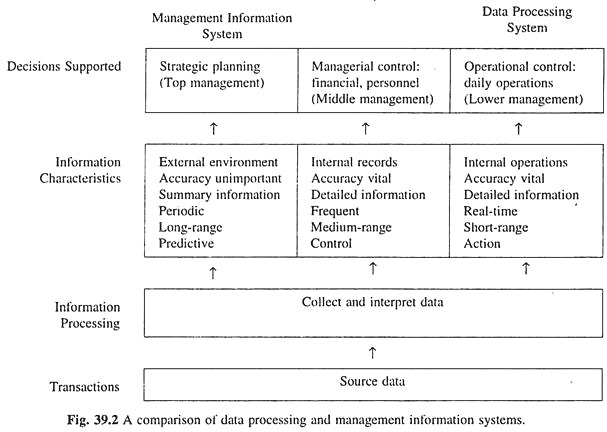This article will help you to learn about the difference between data processing and management information systems (MIS).
Difference between Data Processing and Management Information System
1. The data processing functions are data collection, manipulation, and storage as used to report and analyze business activities. The data processing system is oriented primarily to processing transactions for day-to-day operations.
The transactions include sales orders, shipping orders, inventory orders, and payroll data. For most of these transactions, routine procedures can be established and carried out repetitively to do the processing required. The procedures become part of the data processing system.
2. An MIS that functions properly processes and analyses data to provide, in particular planning and control information that supports the decision making role of management. A management information system (MIS) performs substantial functions beyond those of a data processing system.
The MIS involves a man/machine system that provides information for managers to use as they perform their managerial functions of planning, organising, staffing, directing, and controlling. Such a system supports basic transaction processing as does a data processing system. It also provides information about the past, present, and future (forecasts) as each relates to the operations within the organisation and within its environment.
A data processing system is not an MIS. Two major distinctions between these types of systems are:
(1) The characteristics of the information they require, and
(2) The decisions that are made based on this information. Fig. 39.2 summarises these differences.
